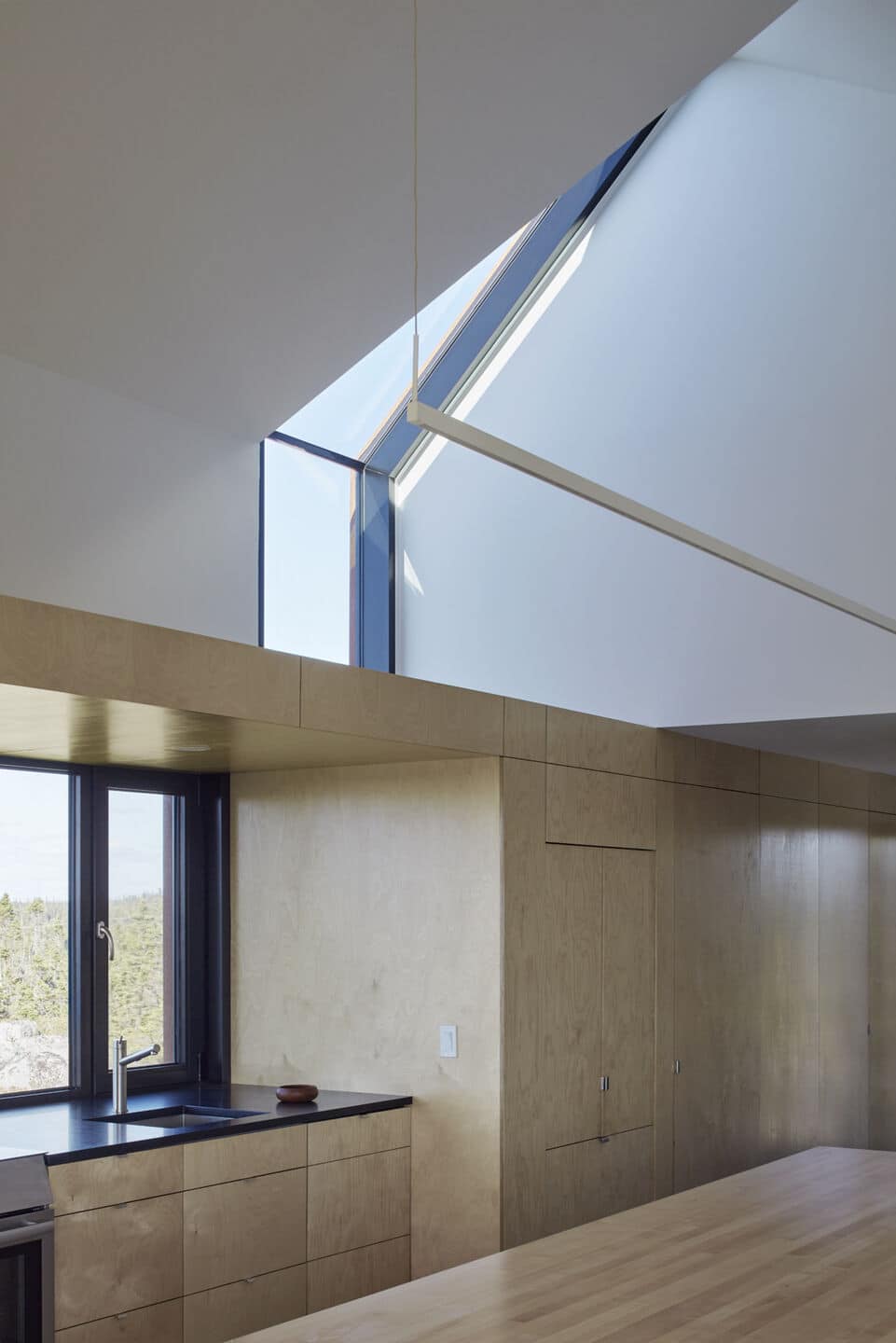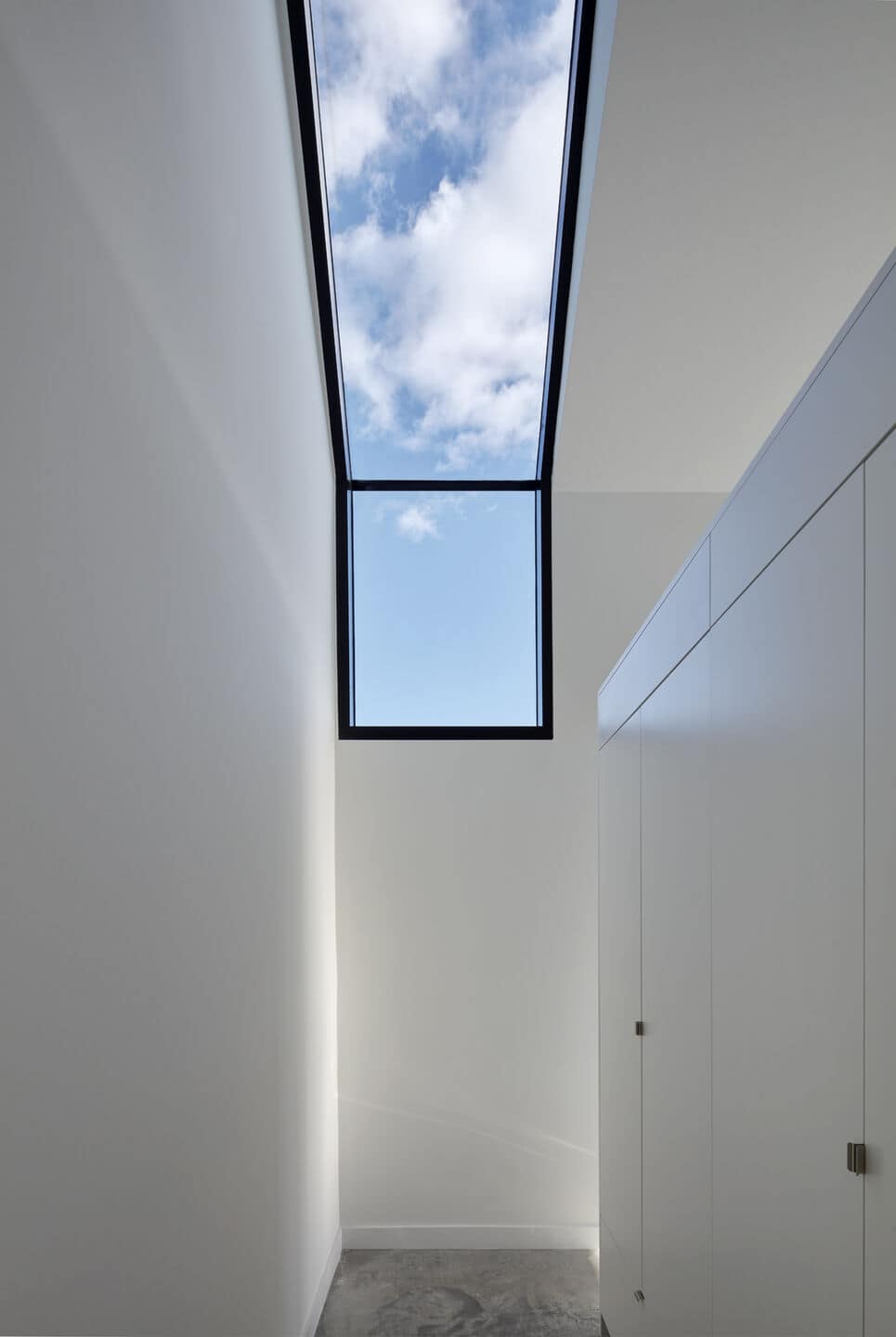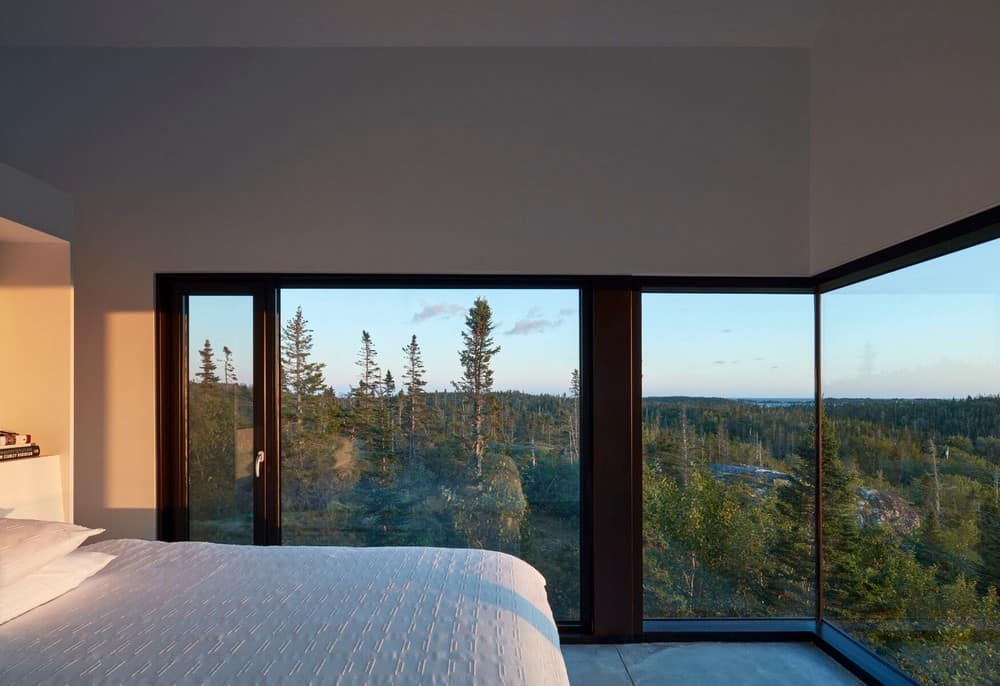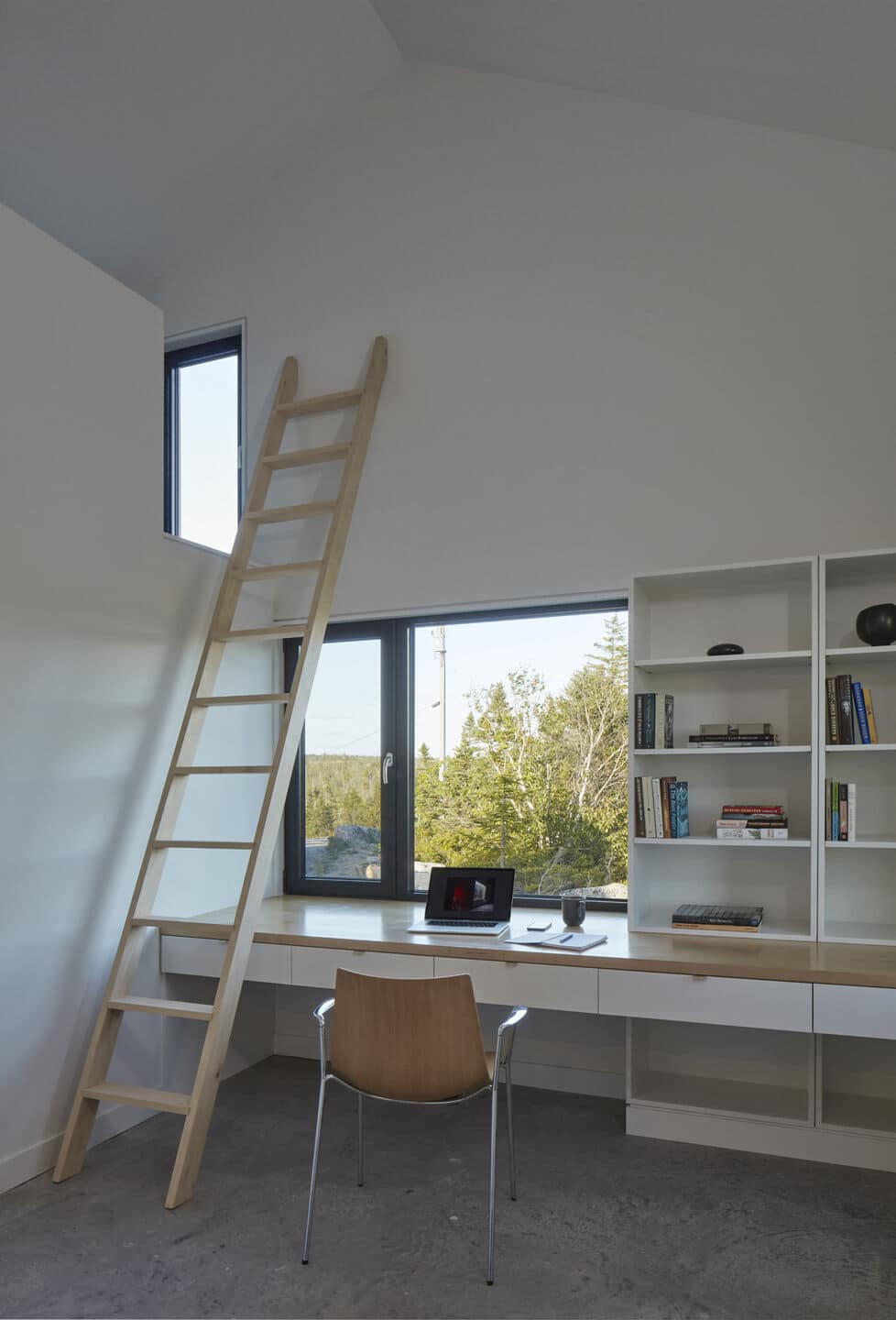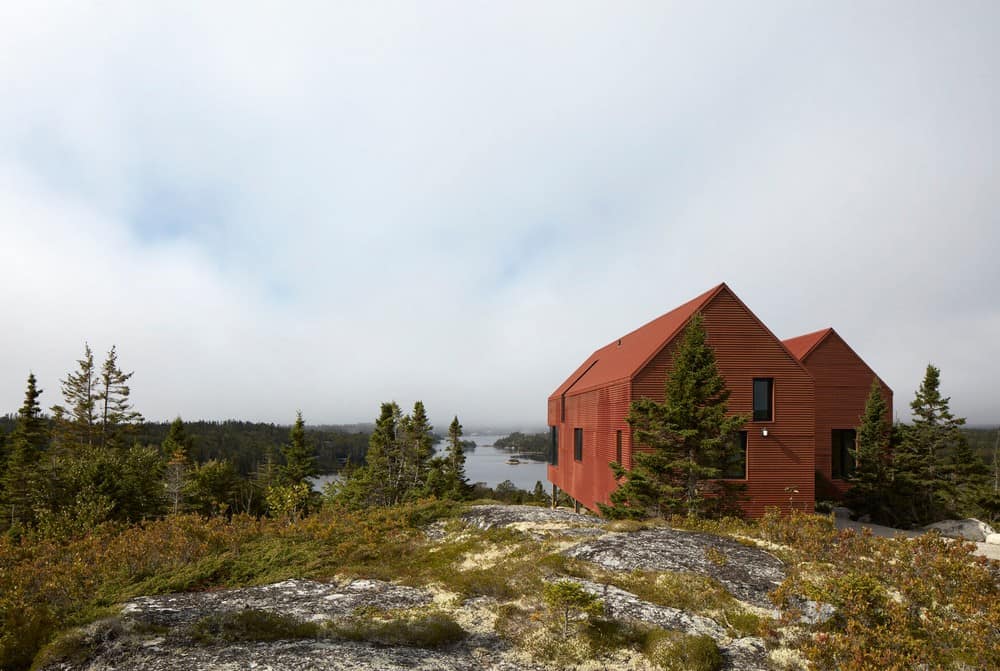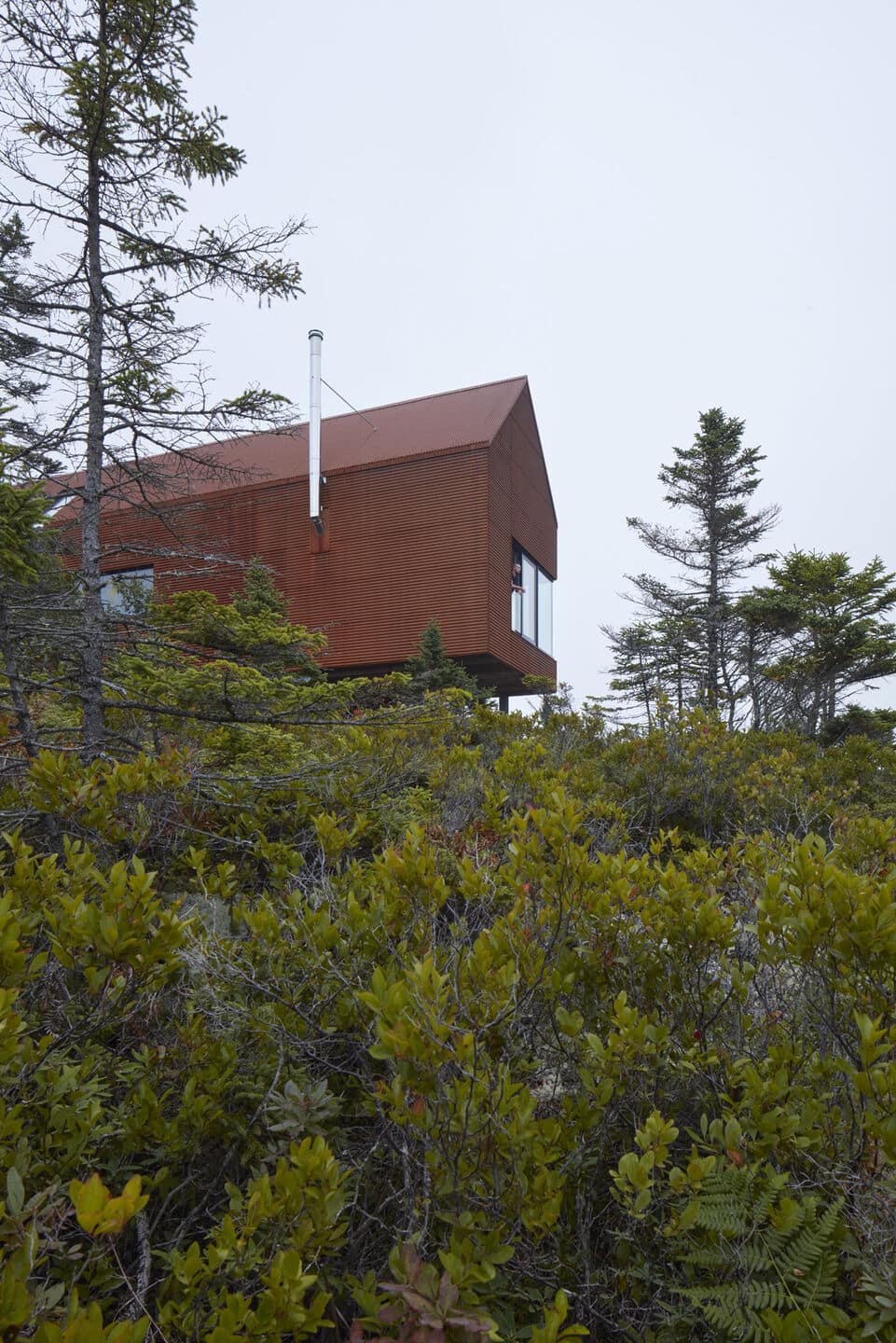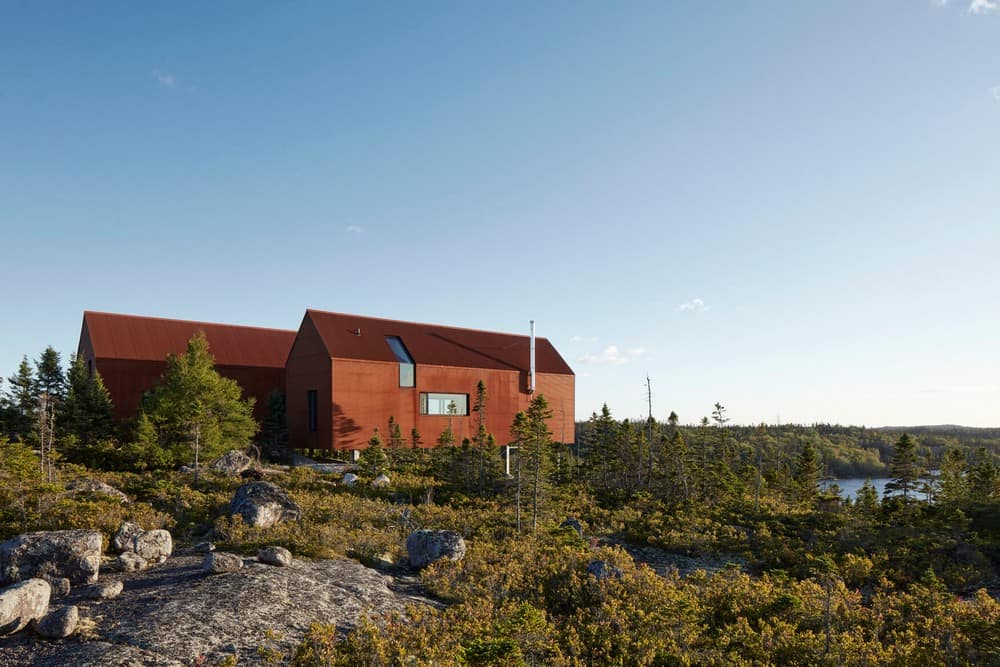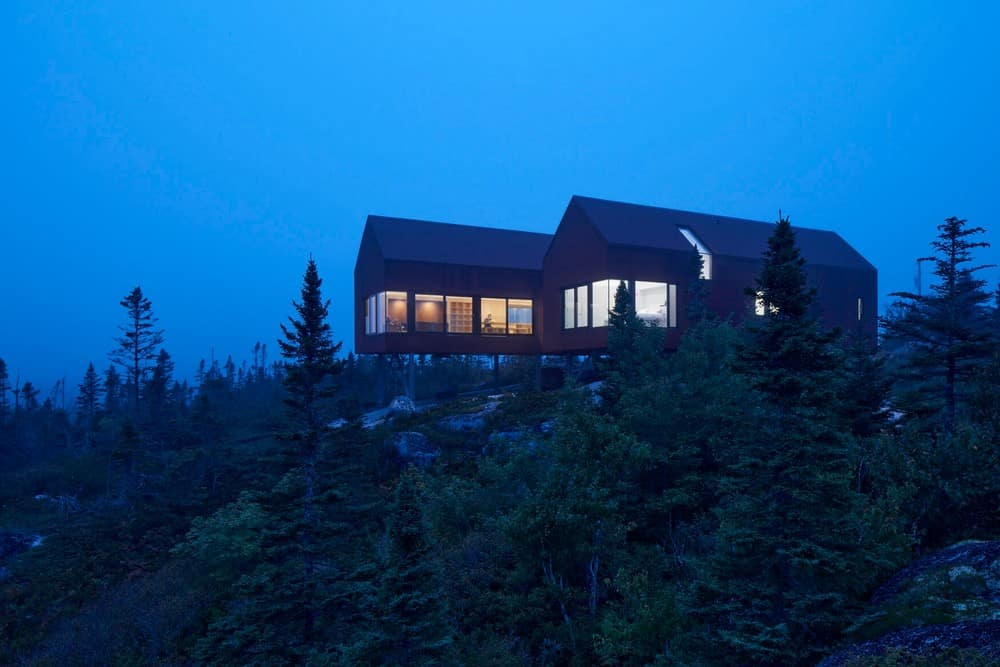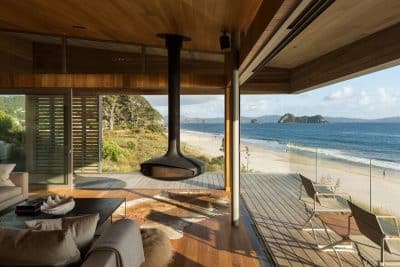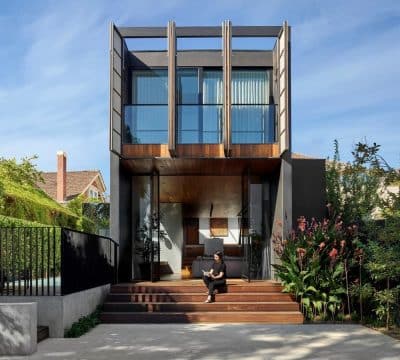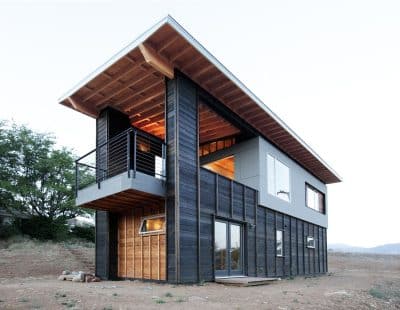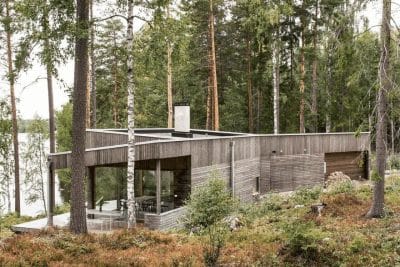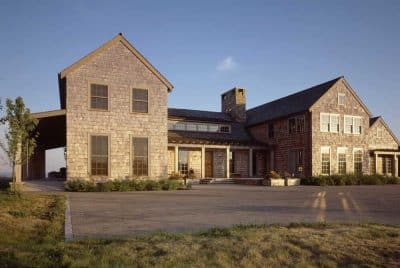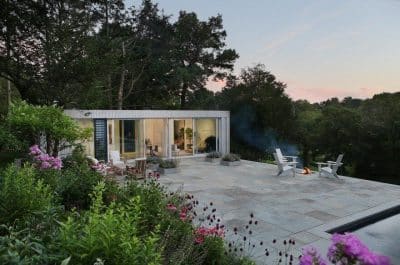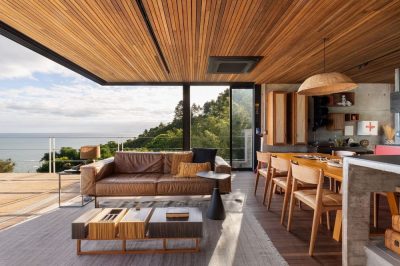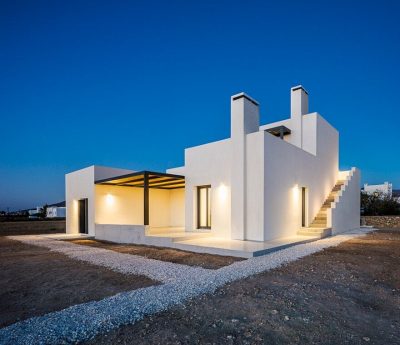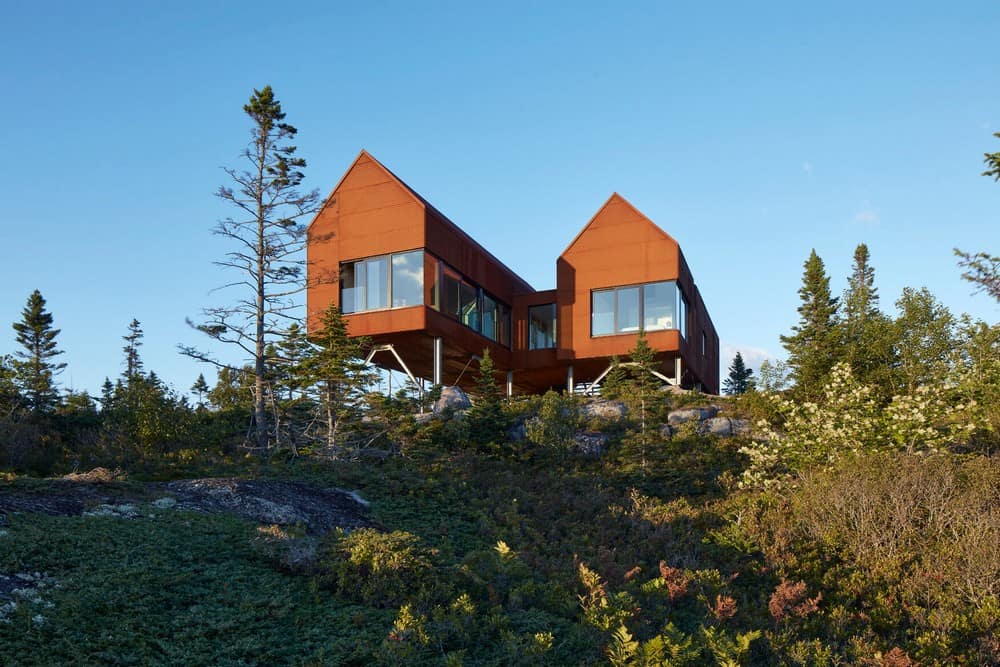
Project: East Dover House
Architects: MacKay-Lyons Sweetapple Architects
Location: Nova Scotia, Canada
Year: 2021
Photographs: James Brittain
Text by MacKay-Lyons Sweetapple Architects
Perched on a granite hilltop looking out on Nova Scotia’s Atlantic coast, this 2,000-square-foot house commands the drama of the bay it overlooks and the rugged terrain upon which it nests. Composed of two connected gable-formed pavilions, the isolated house establishes the feeling of a micro-settlement nestled within the area’s craggy geomorphology.
Cantilevering the house from its base on galvanized steel stilts creates the impression of floating above the bedrock, while also providing space for lichens and red conifers to grow underneath and around the building. A monolithic weathering steel skin wraps the structural frame, complimenting the ever-evolving nature that surrounds the house. Its minimalistic details at the eaves and openings reinforce an economical ethic that carries through the interior.
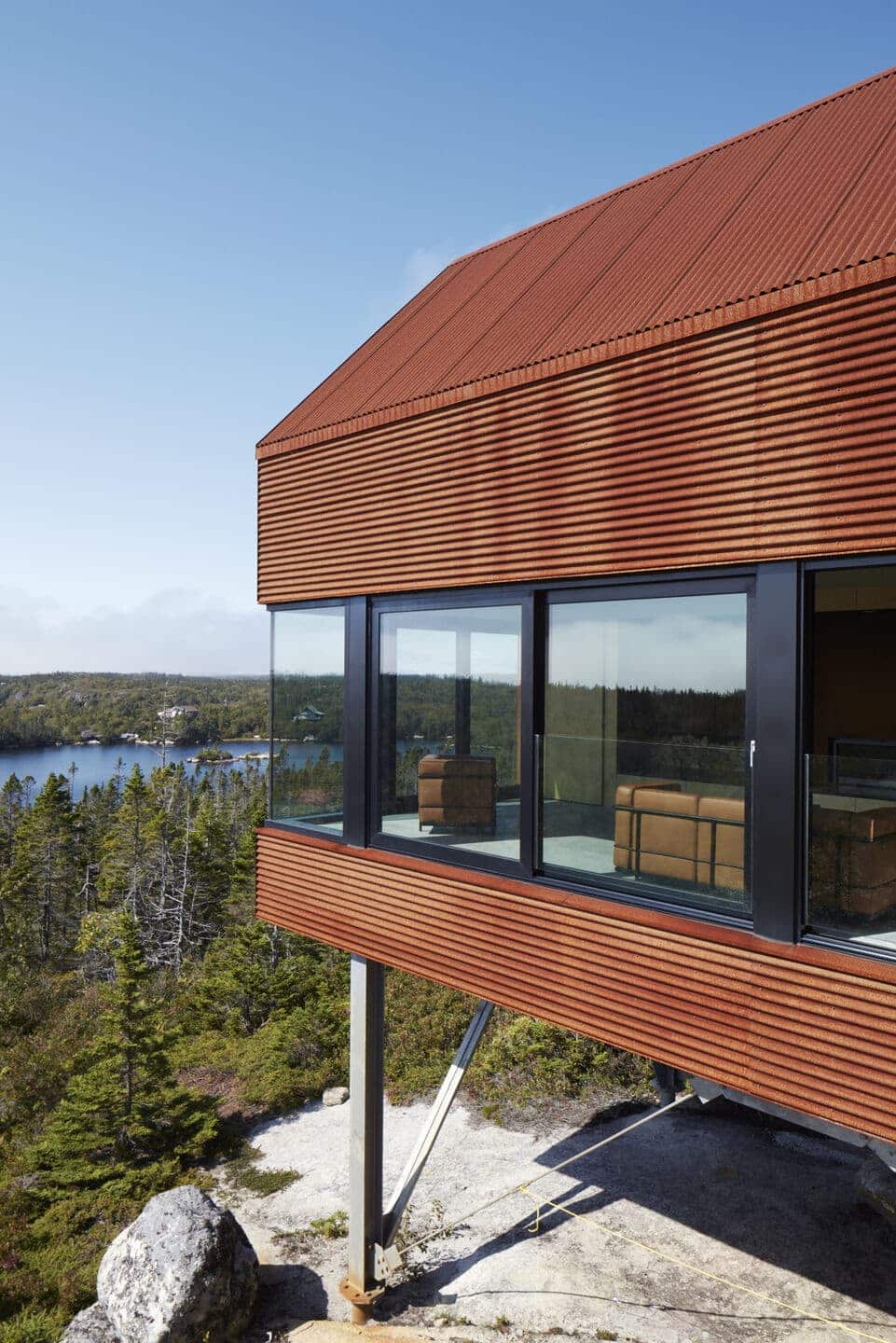
Glass walls wrap around the living area and master bedroom, offering expansive views of the run and the sea. A thick plywood and weathered steel north wall containing a fireplace, shelving, and cabinets anchors the main living space and provides a feeling of refuge. Two windows fold into the roofline, drawing light and views from above, while also maintaining a strong sense of shelter.
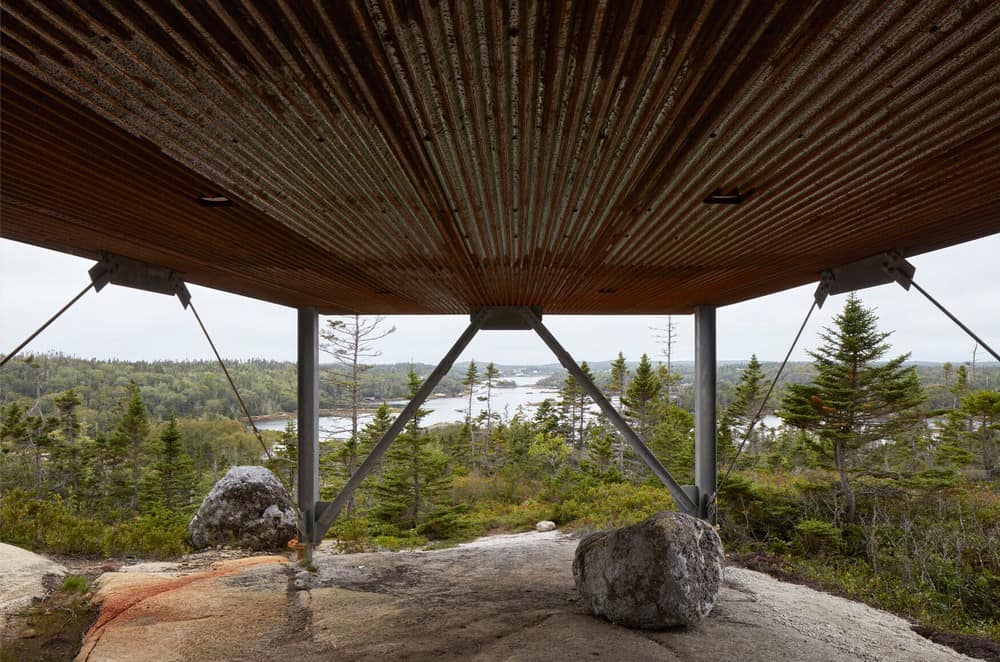
The project was conceived 16 years prior to its construction. The clients, ex-pats Lizzie Bray and Peter Bridgewater, were living in Singapore and making plans to retire in Canada once their sons were both in university. Lizzie Bray, a Canadian, wanted a place in which to reunite with extended family and strengthen roots. Peter, a landscape architect and an “outdoors sort of person,” desired a modernist home that would facilitate a deep connection with the land. While the couple had purchased the property and held strong to their vision, they needed to wait until they could afford to construct the house. In the meantime, the architects honed their preoccupation with developing “a good generic” — strategies to make custom architecture more generally affordable and accessible.
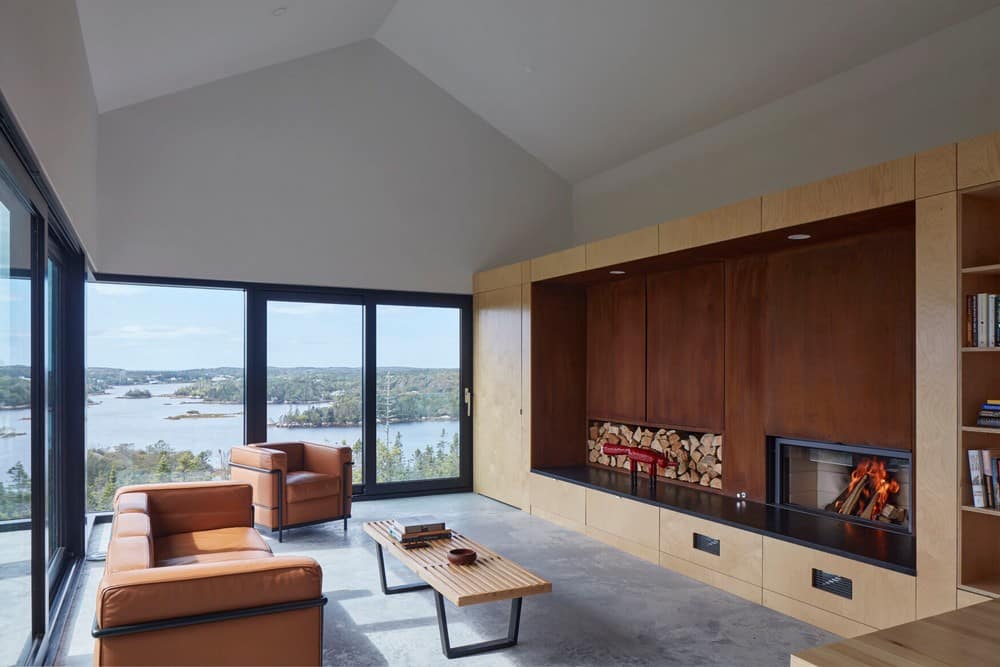
Off the shelf, gangnail scissor trusses define a unifying cross axis between the two pavilions by transferring loads through the envelope, while inexpensively allowing for a double-height interior with no columns or interior structural systems to obscure the panoramic view. Simple interior materials such as concrete floors and natural birch plywood cabinetry offer durability, clarity, and affordability. Further fusing the house’s interplay with its environment, power is supplied by a field of solar panels which contributes excess energy to the electrical grid.
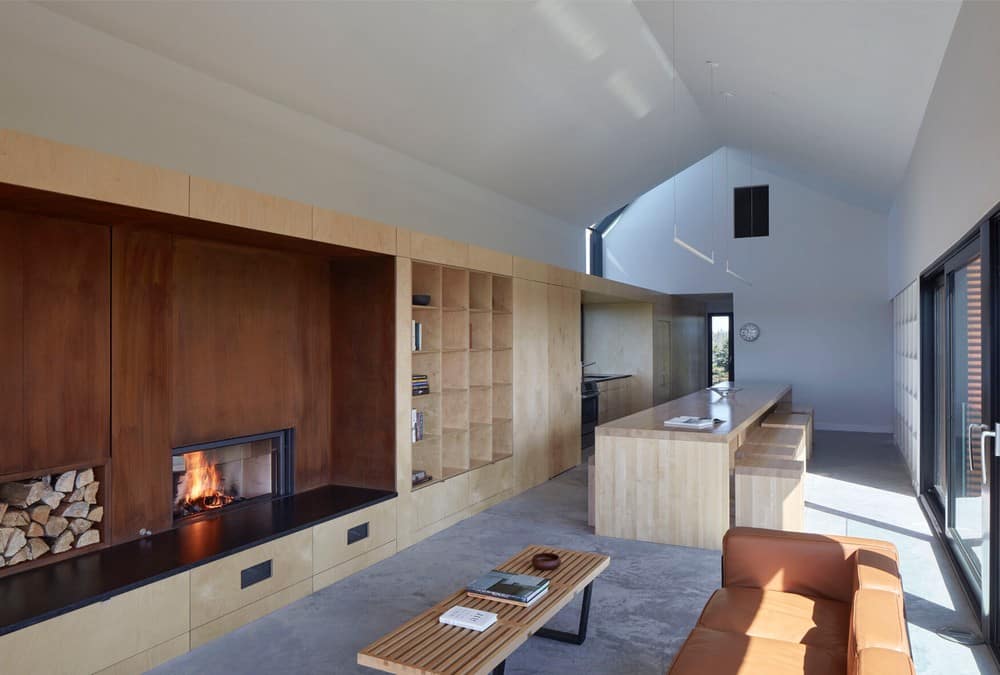
According to Peter, “the house feels very contemporary while having a vernacular identity that is characteristic of the culture and the community. It’s very traditional in the manner that it was built with a timber structure by a local crew. It has a wonderful serenity — almost as though you are outdoors in an open space with a campfire to add comfort. I love watching the waves rolling in and the birds circling.”
The East Dover House consists of a living pavilion and a sleeping pavilion, with 3 bedrooms, 2.5 baths, a study, and a future garage.
